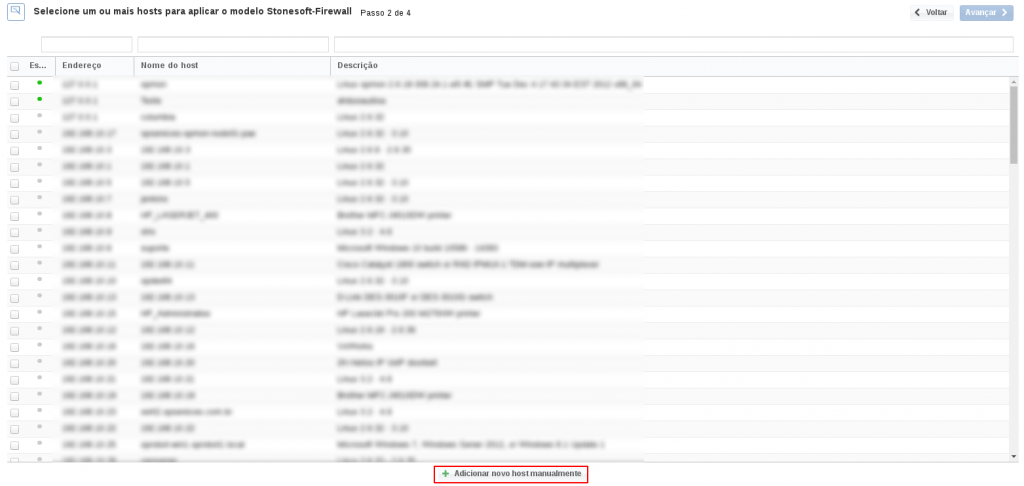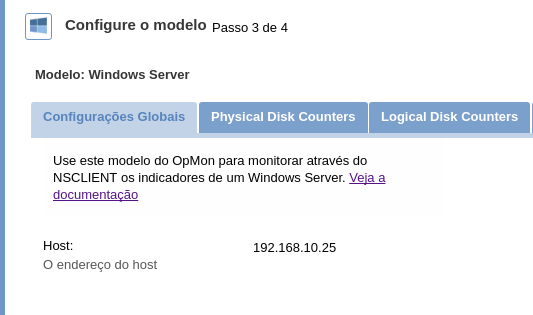Objective
Use this OpMon Model to monitor Windows 2008 R2 IIS, through NSClient++.
Target Audience
OpMon admins who wishes to monitor Windows 2008 R2 IIS.
Prerequisites
- OpMon 7.0 or higher.
- Have the OpMon installed.
- Have the NSClient++ installed, how to make the installation follow this documentation.
Available Services
- Counter
- Internet Information Services GlobalFile Cache Flushes
- Internet Information Services GlobalFile Cache Hits
- Internet Information Services GlobalFile Cache Hits %
- Internet Information Services GlobalActive Flushed Entries
- Internet Information Services GlobalBLOB Cache Flushes
- Internet Information Services GlobalBLOB Cache Hits
- Internet Information Services GlobalBLOB Cache Hits %
- Internet Information Services GlobalBLOB Cache Misses
- Internet Information Services GlobalCurrent BLOBs Cached
- Internet Information Services GlobalCurrent File Cache Memory Usage
- Internet Information Services GlobalCurrent Files Cached
- Internet Information Services GlobalCurrent URIs Cached
- Internet Information Services GlobalFile Cache Misses
- Internet Information Services GlobalMaximum File Cache Memory Usage
- Internet Information Services GlobalTotal BLOBs Cached
- Internet Information Services GlobalTotal Files Cached
- Internet Information Services GlobalTotal Flushed BLOBs
- Internet Information Services GlobalTotal Flushed Files
- Internet Information Services GlobalTotal Flushed URIs
- Internet Information Services GlobalTotal URIs Cached
- Internet Information Services GlobalURI Cache Flushes
- Internet Information Services GlobalURI Cache Hits
- Internet Information Services GlobalURI Cache Hits %
- Internet Information Services GlobalURI Cache Misses
- MemoryPool Nonpaged Bytes
- MemoryPool Paged Bytes
- Process(dllhost)Pool Nonpaged Bytes
- Process(dllhost)Pool Paged Bytes
- Process(inetinfo)Pool Nonpaged Bytes
- Process(inetinfo)Pool Paged Bytes
- Process(inetinfo)Private Bytes
- Thread(inetinfo/0)Context Switches/sec
- Thread(inetinfo/1)Context Switches/sec
- Thread(inetinfo/2)Context Switches/sec
- Thread(inetinfo/3)Context Switches/sec
- Web Service CacheCurrent Files Cached
- Web Service CacheCurrent Metadata Cached
- Web Service CacheCurrent URIs Cached
- Web Service CacheFile Cache Hits %
- Web Service CacheMetadata Cache Hits
- Web Service CacheURI Cache Hits %
- Web Service(_Total)Bytes Received/sec
- Web Service(_Total)Bytes Sent/sec
- Web Service(_Total)Bytes Total/sec
- Web Service(_Total)Current Connections
- Web Service(_Total)Get Requests/sec
- Web Service(_Total)ISAPI Extension Requests/sec
- Web Service(_Total)Maximum Connections
- Web Service(_Total)Post Requests/sec
- Web Service(_Total)Total Connection Attempts (all instances)
- Ports
- 80
- 443
- Services
- IISAdmin
- W3SVC
Applying the Monitoring Model
On the hosts or services management area, click on “+” icon to add a new Host, like the image below:

In this area, select the Windows Model Category:

Then click on “Use This Model” on Windows 2008 RS IIS Health:

This model could be applied on Windows host, or if you wish, you can add a new host just for this monitor. If you wish add a new host, click on: “Add a new host manually”:

In this area insert the relative information about the Host, in this case the Windows host in question and click in “Create a new host”:

In this area, with the host selected click in “Next”:

Then you will see an screen like below, where are informed the Windows information like IP:

To make the service definitions, just navigate through the services using the buttons “Next” and “Back”:

After concludes the definition of services, advance to the revision area of included services. Enjoy to observes which be possible expand the revision area of hosts and services, just click on “+” icon, like below:

As you can see, in this area it is possible to make changes if necessary. When the definitions are make, just click in “Finalize” to conclude the model application process.
Done! The elements are included with success.
